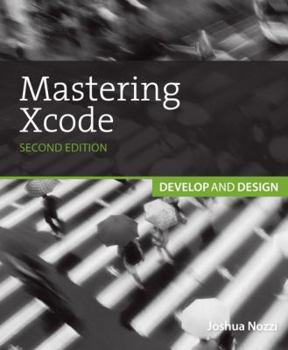Mastering Xcode: Develop and Design
Select Format
Select Condition 
Book Overview
Xcode is the flagship application of Apple s suite of developer tools. In this book, Xcode experts Maurice Kelly and Joshua Nozzi show you how to use Apple s powerful developer tools to start writing iOS and OS X apps. You ll learn what Xcode can do and gain a deep understanding of how Xcode works so you can create and maintain great apps of your own. After a tour of the Xcode tools suite, you ll jump in by creating a basic Cocoa app and exploring the Xcode interface. You ll learn how to manage your project, write and debug code, build user interfaces, and use version control. You ll also learn to customize the build process, write and run unit tests, profile your code, and deploy your apps. This book includes: Detailed instruction, ample illustrations, and clear examples Real-world guidance and advice Insight into best practices from two Xcode experts Emphasis on using Xcode s streamlined interface for UI design, coding, testing, and debugging " This description may be from another edition of this product.
Format:Paperback
Language:English
ISBN:0321861620
ISBN13:9780321861627
Release Date:January 2013
Publisher:Peachpit Press
Length:432 Pages
Weight:1.55 lbs.
Dimensions:0.7" x 7.3" x 9.0"
Customer Reviews
7 customer ratings | 5 reviews
There are currently no reviews. Be the first to review this work.





















